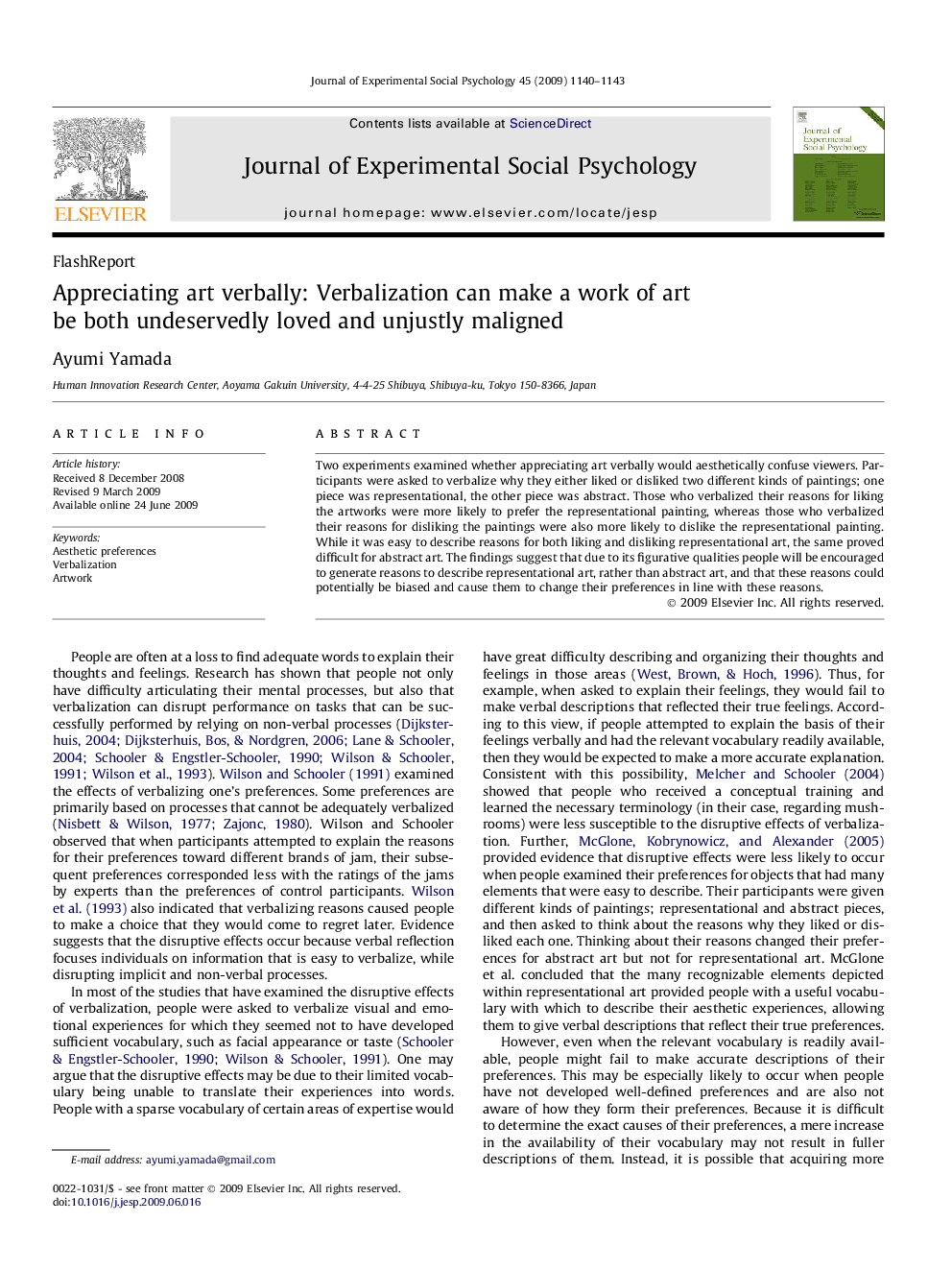| Article ID | Journal | Published Year | Pages | File Type |
|---|---|---|---|---|
| 948764 | Journal of Experimental Social Psychology | 2009 | 4 Pages |
Two experiments examined whether appreciating art verbally would aesthetically confuse viewers. Participants were asked to verbalize why they either liked or disliked two different kinds of paintings; one piece was representational, the other piece was abstract. Those who verbalized their reasons for liking the artworks were more likely to prefer the representational painting, whereas those who verbalized their reasons for disliking the paintings were also more likely to dislike the representational painting. While it was easy to describe reasons for both liking and disliking representational art, the same proved difficult for abstract art. The findings suggest that due to its figurative qualities people will be encouraged to generate reasons to describe representational art, rather than abstract art, and that these reasons could potentially be biased and cause them to change their preferences in line with these reasons.
